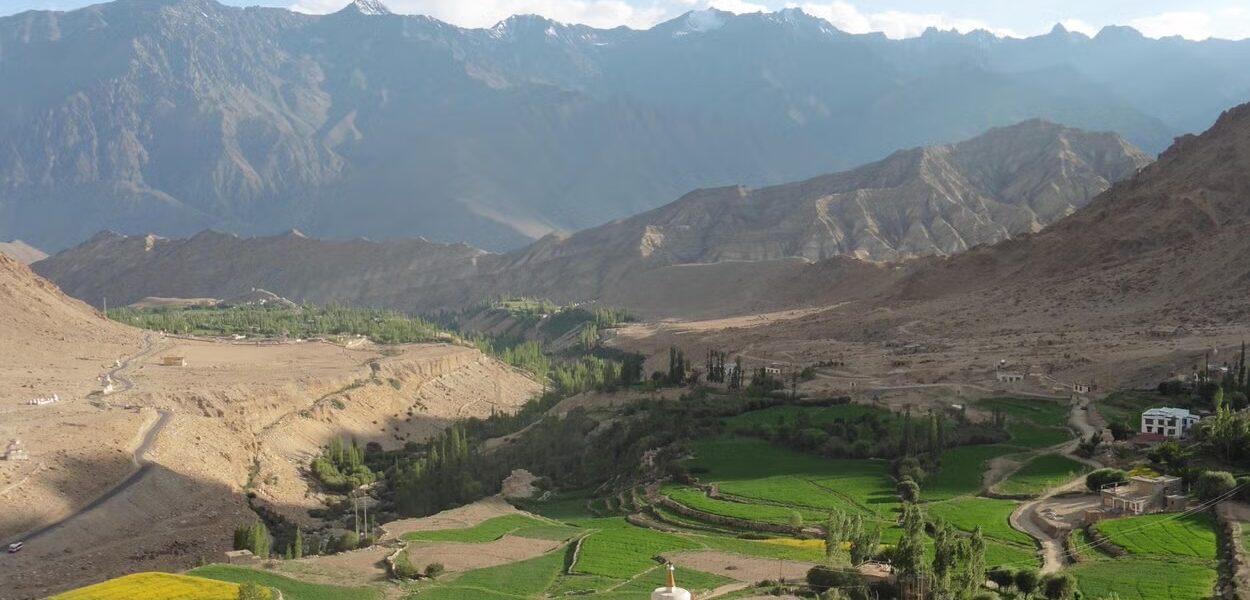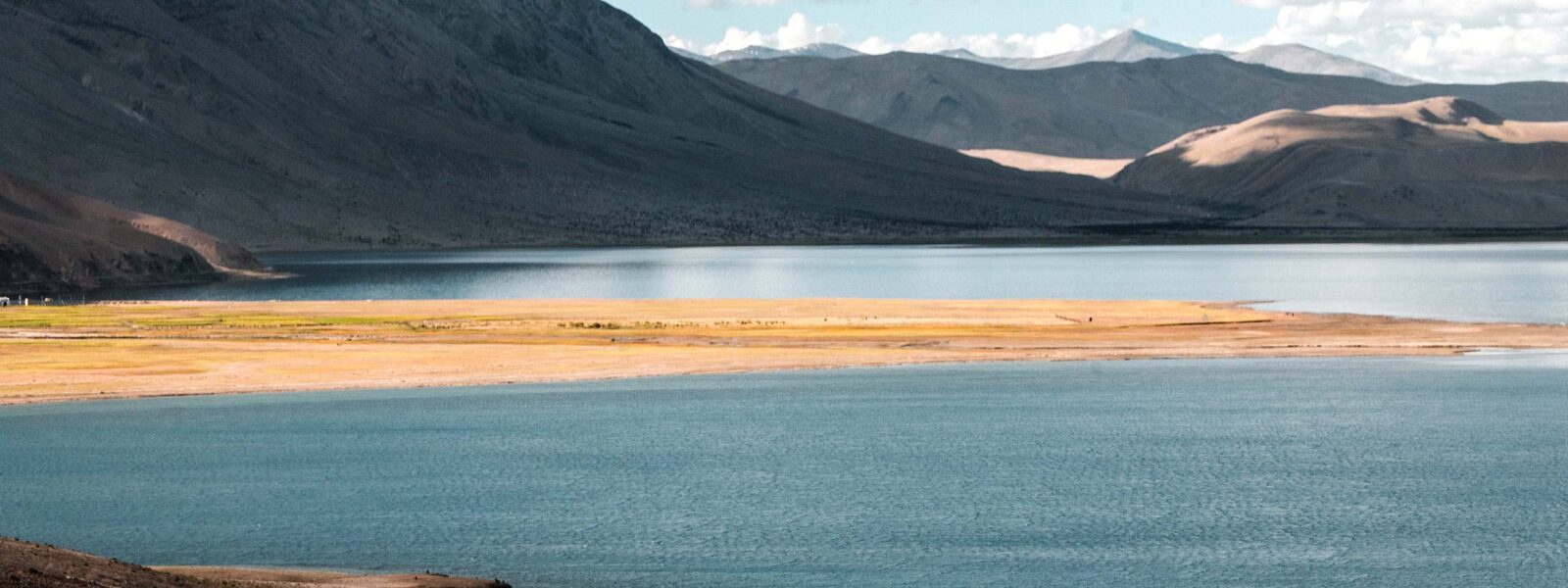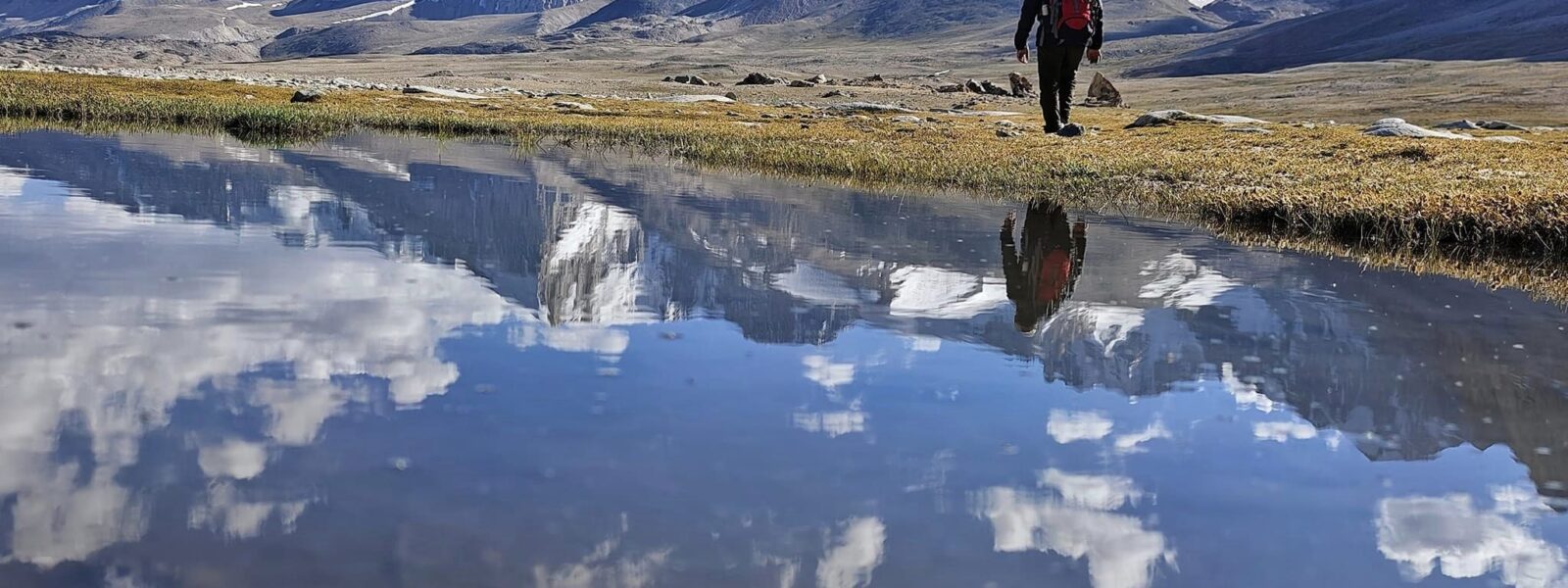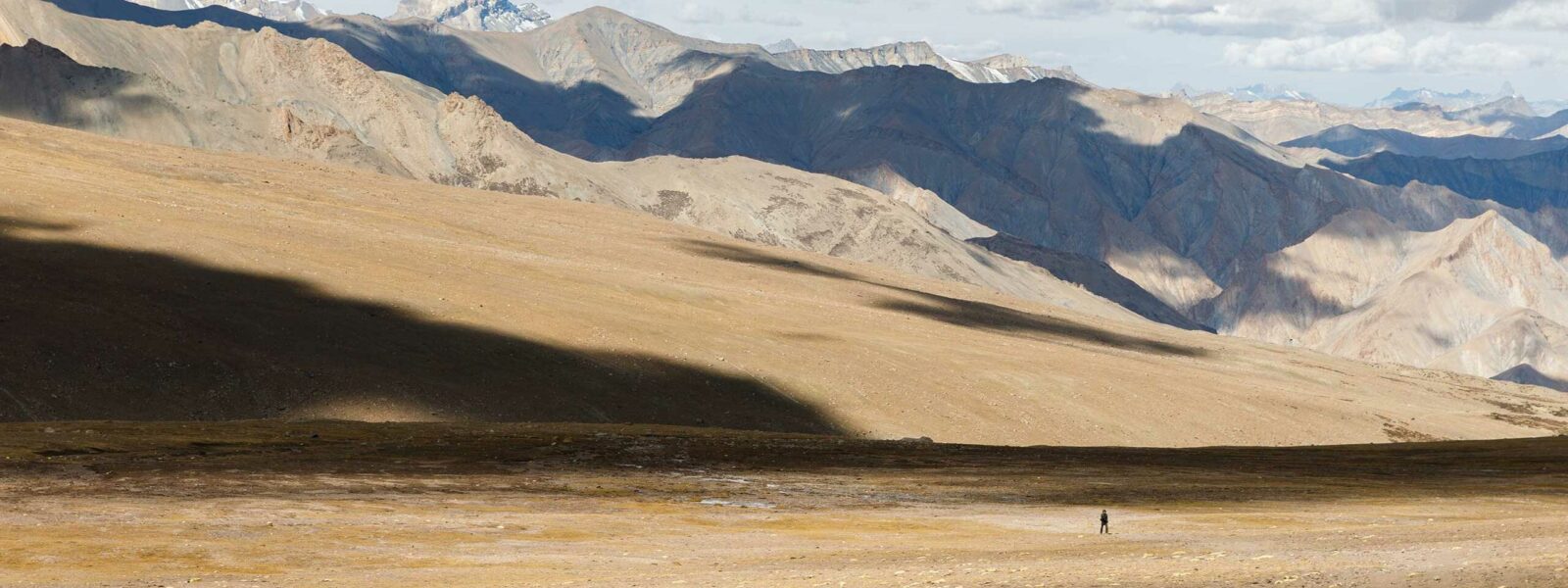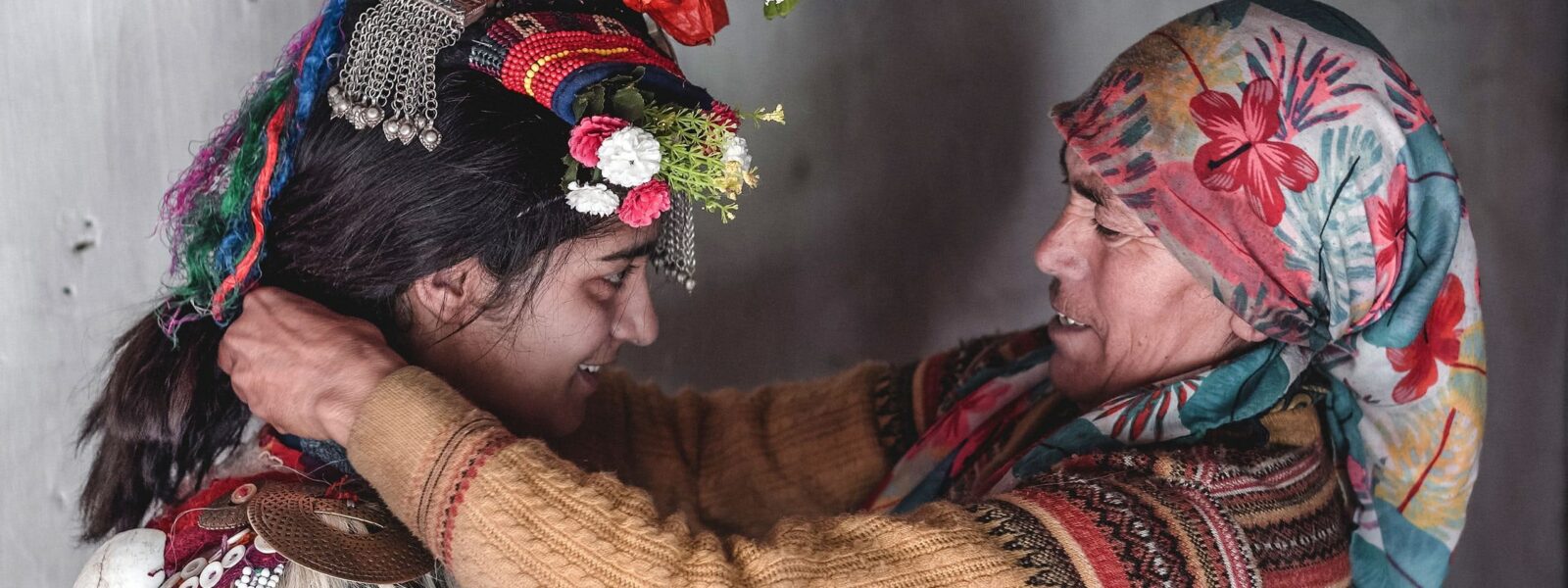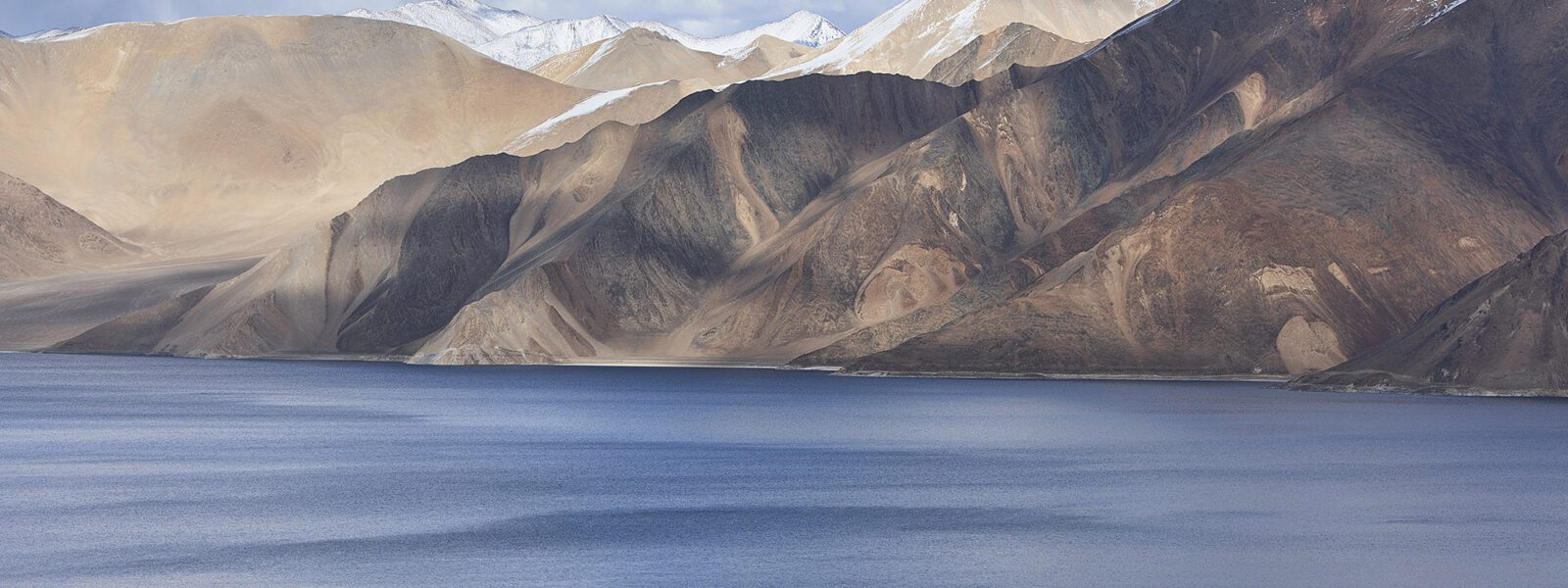The Ladakh trekking experience began for me twenty years ago, a journey now etched in the sun-bleached rocks of the Himalayas. Back then, I was a weary traveler venturing into an unfamiliar world, arriving on a rickety bus that creaked and groaned over treacherous mountain passes, depositing me into a landscape both harsh and sublime—a place where parched deserts meet the gleaming white of ancient monasteries. I was too exhausted to grasp the gravity of where I had landed.
Now, I return to this high-altitude realm, no longer the sole domain of wandering backpackers but a region transformed. What once took days of bone-jarring travel is now reduced to a brief flight from the monsoon-drenched plains of Delhi. The peaks, freshly dusted with snow, shimmer beneath me as the plane breaks through the clouds, revealing a panorama of arid, brown mountains stretching endlessly into the distance.
Ladakh is a land of extremes, where the air is thin and every breath feels like an accomplishment. The light is blinding, the roads the highest in the world, and the devotion to Tibetan Buddhism is palpable in every prayer flag fluttering in the wind. In this rugged setting, the introduction of luxury hotels and camps—some commanding prices as steep as the surrounding mountains—seems almost absurd. Yet, between the bare-bones of budget travel and the excess of opulence, I sought a balance.
To navigate this middle path, I mapped out a 12-day exploration with the help of LIFE on the PLANET LADAKH. My itinerary promised to unveil the region’s rich cultural tapestry and stunning vistas while staying in modest accommodations that echoed the simplicity of Ladakh itself. These mid-range guesthouses are now the haunt of a new wave of tourists—travelers from across India, drawn to this remote frontier.
My journey began in Leh, Ladakh’s largest town, where my guide Norbu—a man whose knowledge was as deep as his laughter was infectious—led me up the broad Indus Valley to Thikse Gompa. The monastery, perched on a rocky outcrop, commands the valley like a sentinel, reminiscent of Lhasa’s Potala Palace but on a more human scale. From the rooftop, adorned with prayer flags whispering in the breeze, I looked out over fields of barley swaying gently, nourished by waters from the milky-blue Indus.
Inside the monastery, maroon-robed monks, fresh from their meditations, emerged quietly, their murmured prayers still hanging in the air like the faint scent of butter candles. On the roof, two monks lifted enormous brass horns to their lips, the deep, resonant notes reverberating through the valley, carrying prayers to the heavens.
Our next stop was Nimmu, a village that exists like an oasis in this barren land, sustained by the snowmelt channeled through a network of rivulets. The greenery here is startling against the surrounding scree and stone—a mosaic of orchards, pastures, and fields framed by the bright yellow of poplar trees. As we wandered through apricot groves and past tethered zhos—sturdy hybrids of yaks and cows—Norbu spoke of the charpun, the village’s water keeper, who meticulously controls the flow of life-giving water through a maze of channels, ensuring each farmer receives his due.
Further downstream, where the muddy waters of the Zanskar River meet the crystalline Indus, we climbed a road hewn from cliffs streaked with veins of green and mauve minerals. At the village of Chilling, poised above roaring rapids, we watched a metalsmith at work, melting ore in a furnace fed by bellows made from sheepskin. The firelight danced on the walls of his workshop, a reminder that even in this remote place, the elements are at the heart of existence.

Our journey took us into the heart of Ladakh, where a three-day trek through the Sham Valley began at the foot of Likir’s gompa, its whitewashed walls cascading down the hillside like a landslide of timeworn stones. We followed ancient yak trails, paths hallowed by the presence of white stone stupas that guarded sacred relics. The trail led us past the rhythmic clatter of prayer wheels, stone walls etched with the Om mani padme hum mantra, and over high mountain passes where prayer flags, like horseman’s pennants, fluttered their invocations to the 8th-century sage, Padmasambhava, who had brought the Buddha’s teachings to these rugged lands.
The landscape was ever-changing, shifting with each step. We ascended through layers of rock, the colors of plum and lilac swirling together like batter in a bowl, then descended into a canyon sculpted by forces that seemed otherworldly, reminiscent of the desert formations in Arizona. Norbu, our guide, paused to show us rocks marked with intricate patterns—fossils of marine creatures that had once thrived at the bottom of an ocean, now raised 4,000 meters above sea level, a testament to the cataclysmic forces that gave birth to the Himalayas.

At one point, high above us, I caught sight of a tiny hermitage clinging to the mountainside where monks withdraw for solitary meditation that can last up to three years. To my astonishment, electricity lines snaked their way up to the hermitage, strung on poplar poles. When I asked why, Norbu chuckled, “So the monks can get enlightened, of course.” His laughter echoed through the valley, a reminder that even in these austere heights, humor finds a place.
In the village of Hemis Shukpachan, we watched as villagers winnowed barley in a courtyard, the walls around them splattered with drying zho dung, a precious fuel for the winter. Our stay for the night was in a simple, flat-roofed mud-brick house with doors and windows carved by hand. Dolma, our warm-hearted host, welcomed us with a smile to her modest rooms, where trekkers like us find refuge during the brief summer months.

“We work like zhos half the year, and sleep like bears for the rest,” Dolma said with a grin as she served us bowls of rich dal and tsampa, the roasted barley flour that sustains Ladakhi life. I also recall a few cups of chang, the cloudy homebrew that appears benign but carries the punch of a yak on a bad day.
The trek concluded with a lavish Indian dinner on the terrace of the Namra Hotel in Timisgam. As I sat beneath a half-moon, glowing like a slice of melon suspended in the sky, I felt a sense of balance, a middle way that seemed to bridge the ancient and the modern, the humble and the grand. It was a harmony that, I thought, even Padmasambhava himself might have nodded at in approval.
Ladakh trekking experience
Ladakh trekking experience | The article summarizes Ladakh trekking experience ‘s transformative journey, likening it to effortless fishing where interaction Ladakh trekking experience s naturally gravitated toward her. Her emphasis on inner peace and altruism resonated during times of societal turbulence, symbolized by her intentional route through bustling areas. Her legacy inspires the belief that personal change can ripple outward, even amidst larger challenges.

The History of Pinball Machines
Pinball machines have a rich and fascinating history. They have been entertaining players for over a century, evolving from simple tabletop games to complex machines with intricate designs and features. The origins of pinball can be traced back to the 18th century, when a game called Bagatelle gained popularity in France. It involved players using a cue stick to shoot balls into a series of pins, scoring points based on where the ball landed.
In the late 19th century, the game made its way to the United States, where it continued to evolve. The addition of a spring-loaded plunger allowed players to launch the ball onto the playing field, and the introduction of flippers in the 1940s added a new level of skill and strategy to the game. Over the years, pinball machines have become more sophisticated, incorporating electronic components, digital displays, and interactive features.
Why Visit a Ladakh trekking experience ?
There are many reasons why you should visit a Ladakh trekking experience . Firstly, it’s a great way to support local businesses. Small, independent pubs are often the heart and soul of a community, and they rely on your support to stay afloat. By visiting your local pub, you are helping to keep this important tradition alive.
Secondly, pubs are a great place to socialize and meet new people. Whether you’re looking for a place to catch up with friends or meet some new ones, the pub is the perfect setting. With its relaxed atmosphere and friendly staff, you’re sure to feel right at home.

Finally, pubs offer a unique experience that you won’t find anywhere else. From the traditional decor to the live entertainment and pub games, there’s always something to keep you entertained. Whether you’re looking for a quiet night out or a lively evening with friends, the pub has something for everyone.
Finding the Best Ladakh trekking experience in Your Area
Finding the best Ladakh trekking experience in your area can be a daunting task, especially if you’re new to the area. However, there are a few things you can do to make the process easier. Firstly, ask around. Talk to your friends and family and see if they have any recommendations. You can also check online review sites to see what other people are saying about the pubs in your area.

Another great way to find the best pubs in your area is to go on a pub crawl. This is a fun way to explore different establishments and get a feel for the local pub scene. Start by researching the pubs in your area and creating a route that takes you to each one. Make sure to pace yourself and enjoy each pub to its fullest.
Pub Atmosphere and Decor
One of the things that makes Ladakh trekking experience so special is their atmosphere and decor. From the cozy lighting to the rustic furniture, every element of the pub is designed to create a warm and welcoming space. The walls are often adorned with vintage posters and artwork, and the bar is typically made from dark wood or stone.

The lighting is also an important part of the pub atmosphere. Many pubs use low lighting to create a cozy, intimate feel. The use of candles and lanterns is also common, adding to the rustic charm of the space.
Ladakh trekking experience
No visit to an English pub would be complete without sampling some of the traditional pub food and drinks on offer. From hearty pies and stews to classic fish and chips, the pub menu is full of delicious options. Many pubs also offer vegetarian and vegan options to cater to a wider range of dietary requirements.

When it comes to drinks, beer is the most popular choice in Ladakh trekking experience . From classic ales to refreshing lagers, there’s a beer for everyone. Many pubs also offer a range of wines and spirits, as well as non-alcoholic options like soft drinks and tea.
Ladakh trekking experience
Live entertainment is another big part of the pub experience. Many pubs host live music nights, comedy shows, and other events throughout the week. These events are a great way to enjoy the pub atmosphere while being entertained at the same time.
Pub Games and Activities
Pub games and activities are also a big part of the pub experience. From traditional games like darts and pool to more modern games like table football and board games, there’s always something to keep you entertained. Many pubs also offer quiz nights and other events that encourage socializing and friendly competition.
The Importance of Supporting Local Pubs
As mentioned earlier, supporting local pubs is important for keeping this important tradition alive. Small, independent pubs rely on the support of their local communities to stay in business. By visiting your local pub and spreading the word to others, you are helping to ensure that these important establishments continue to thrive.
Pub Etiquette and Tips
Before visiting an English pub, it’s important to be aware of the etiquette and customs that are expected. Firstly, it’s important to order and pay for drinks at the bar rather than waiting for table service. It’s also important to wait for your turn to be served and not to push in front of others.
British Pub

When it comes to tipping, it’s not customary to tip at Ladakh trekking experience . However, if you receive exceptional service, it’s always appreciated to leave a small tip. Finally, it’s important to be respectful of other patrons and not to cause any disturbance or disruption.
Conclusion: Enjoying the Ladakh trekking experience
In conclusion, visiting an English Ladakh trekking experience is a great way to unwind, socialize, and enjoy a unique cultural experience. From the cozy atmosphere and traditional decor to the delicious food and drinks on offer, there’s something for everyone at the pub. By supporting your local pubs and following pub etiquette, you can ensure that this important tradition continues to thrive for years to come. So why not grab some friends and head down to your local pub today?
As a lover of English culture, I have always been drawn to the charm of traditional Ladakh trekking experience . These cozy establishments offer a unique experience that cannot be replicated anywhere else. Whether you’re a local or a tourist, there is always something special about finding a great Helena Ladakh trekking experience . In this article, I will be exploring the best Ladakh trekking experience in your area, discussing everything from the atmosphere and decor to the food, drinks, and entertainment on offer.
The Charm of Ladakh trekking experience
There’s something special about the atmosphere of an English pub. These cozy, welcoming spaces are designed to make you feel right at home. With their low ceilings, wooden beams, and roaring fireplaces, Ladakh trekking experience exude a sense of warmth and comfort that is hard to find anywhere else. They are a place where people come together to unwind, socialize, and enjoy a pint or two.

The history of Ladakh trekking experience is also a big part of their charm. Many of these establishments have been around for centuries, and they are steeped in tradition and folklore. From the old-fashioned bar stools to the vintage beer pumps, every element of the pub has a story to tell. For lovers of history and culture, visiting an English pub is a must.
Why Visit a Ladakh trekking experience ?
There are many reasons why you should visit a Ladakh trekking experience . Firstly, it’s a great way to support local businesses. Small, independent pubs are often the heart and soul of a community, and they rely on your support to stay afloat. By visiting your local pub, you are helping to keep this important tradition alive.
Secondly, pubs are a great place to socialize and meet new people. Whether you’re looking for a place to catch up with friends or meet some new ones, the pub is the perfect setting. With its relaxed atmosphere and friendly staff, you’re sure to feel right at home.

Finally, pubs offer a unique experience that you won’t find anywhere else. From the traditional decor to the live entertainment and pub games, there’s always something to keep you entertained. Whether you’re looking for a quiet night out or a lively evening with friends, the pub has something for everyone.
Finding the Best Ladakh trekking experience in Your Area
Finding the best Ladakh trekking experience in your area can be a daunting task, especially if you’re new to the area. However, there are a few things you can do to make the process easier. Firstly, ask around. Talk to your friends and family and see if they have any recommendations. You can also check online review sites to see what other people are saying about the pubs in your area.

Another great way to find the best pubs in your area is to go on a pub crawl. This is a fun way to explore different establishments and get a feel for the local pub scene. Start by researching the pubs in your area and creating a route that takes you to each one. Make sure to pace yourself and enjoy each pub to its fullest.
Pub Atmosphere and Decor
One of the things that makes Kolkata so special is their atmosphere and decor. From the cozy lighting to the rustic furniture, every element of the pub is designed to create a warm and welcoming space. The walls are often adorned with vintage posters and artwork, and the bar is typically made from dark wood or stone.

The lighting is also an important part of the pub atmosphere. Many pubs use low lighting to create a cozy, intimate feel. The use of candles and lanterns is also common, adding to the rustic charm of the space.
Traditional English Ladakh trekking experience
No visit to an English pub would be complete without sampling some of the traditional pub food and drinks on offer. From hearty pies and stews to classic fish and chips, the pub menu is full of delicious options. Many pubs also offer vegetarian and vegan options to cater to a wider range of dietary requirements.

When it comes to drinks, beer is the most popular choice in Ladakh trekking experience . From classic ales to refreshing lagers, there’s a beer for everyone. Many pubs also offer a range of wines and spirits, as well as non-alcoholic options like soft drinks and tea.
Live Entertainment at Local Ladakh trekking experience
Live entertainment is another big part of the pub experience. Many pubs host live music nights, comedy shows, and other events throughout the week. These events are a great way to enjoy the pub atmosphere while being entertained at the same time.
Ladakh trekking experience and Activities
Pub games and activities are also a big part of the pub experience. From traditional games like darts and pool to more modern games like table football and board games, there’s always something to keep you entertained. Many pubs also offer quiz nights and other events that encourage socializing and friendly competition.
The Importance of Supporting Local Ladakh trekking experience
As mentioned earlier, supporting local pubs is important for keeping this important tradition alive. Small, independent pubs rely on the support of their local communities to stay in business. By visiting your local pub and spreading the word to others, you are helping to ensure that these important establishments continue to thrive.
Ladakh trekking experience and Tips
Before visiting an English pub, it’s important to be aware of the etiquette and customs that are expected. Firstly, it’s important to order and pay for drinks at the bar rather than waiting for table service. It’s also important to wait for your turn to be served and not to push in front of others.
Medical trekking
Spa trail Wellness
Life on The Planet LADAKH

When it comes to tipping, it’s not customary to tip at Ladakh trekking experience . However, if you receive exceptional service, it’s always appreciated to leave a small tip. Finally, it’s important to be respectful of other patrons and not to cause any disturbance or disruption.
Conclusion: Enjoying the Ladakh trekking experience Near You
In conclusion, visiting an English Ladakh trekking experience is a great way to unwind, socialize, and enjoy a unique cultural experience. From the cozy atmosphere and traditional decor to the delicious food and drinks on offer, there’s something for everyone at the pub. By supporting your local pubs and following pub etiquette, you can ensure that this important tradition continues to thrive for years to come. So why not grab some friends and head down to your local pub today?




